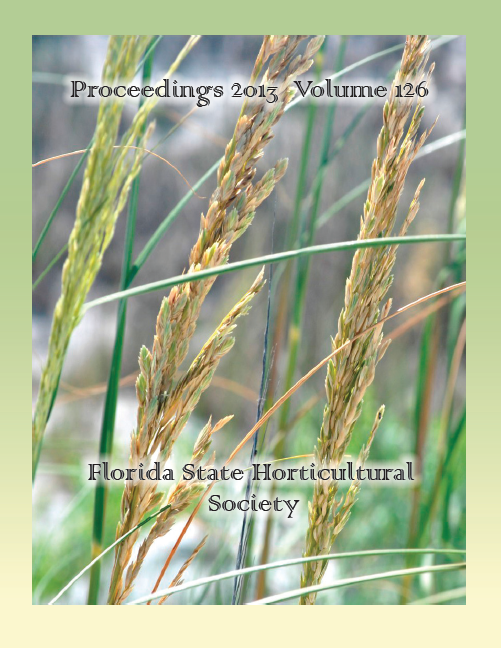Published 2013-12-01
Keywords
- Cyperus rotundus,
- Cyperus esculentus,
- soil fumigation,
- isothiocyanate,
- nutsedge
Abstract
Metam potassium is recommended to control purple and yellow nutsedges (Cyperus rotundus and C. esculentus, respectively) in fumigated beds. However, lateral movement of metam potassium is limited due to its low vapor pressure. When metam potassium is injected through the drip lines, untreated strips (each 4 to 6 inches wide) on the bed shoulders occur. This translates into nutsedge actively growing in those untreated bed sides. Integrate® (triblock co polymer 61% and glucoethers 19%) is a liquid polymer used to improve soil wetting. The objective of this study was to evaluate the performance of metam potassium against nutsedge when Integrate® was applied to the soil. treatments consisted of: a) metam potassium (60 gal/acre and 5.5% v/v), b) Integrate® (1 gal/acre and 5.5% v/v) followed by metam potassium, and c) a non-fumigated control. The soil-wetting polymer was applied 1 d before the fumigant. Addition of the soil-wetting polymer to the soil prior to the fumigation improved nutsedge control and soil moisture at the 5-inch depth in both trials. In three trials, plots treated with the soil surfactant and metam potassium had 50%, 52%, and 39% fewer nutsedge than plots receiving metam potassium only.

